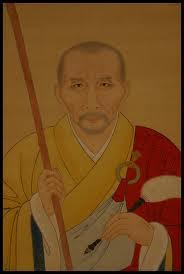Biography
A Japanese painter Tosa Mitsuoki, also known as Tsuneaki, was born in 1617 in Sakai, Japan. The painter started to run the Tosa school that was concentrated on art. However, it was not as successful and prolific during those times as it was when Mitsuoki’s father Mitsunori run the school. Hence, to renew the school, Mitsuoki moved to Kyōto in 1634 and brought the Tosa school to the city, concentrating on its development. In 1654 he got the position of a court painter, the work that has traditionally been given to the members of the Tosa Family. Mitsuoki’s connections to the imperial household provided him with an aristocratic audience. Starting from that time, the Tosa school became once again the highlight of the court. The artist belonged to the early Edo period (1603–1867). The Tosa School was flourishing throughout the Edo period, and Mitsuoki became its last groundbreaking artist. It should be also mentioned that Mitsuoki’s style became an example of the exquisite combination of forms and delicate lines. Hence, many successors of the Tosa school has followed the painter’s style.
Key Ideas in painting
Generally, the key idea in the artist’s paintings is to render the beauty of nature in harmony with humans and classical poetry. In his drawings, Mitsuoki depicts spring-flowering cherries, birds, autumn maple strikes, and many other pieces of nature. Concentrating on his style, Mitsuoki wanted to represent the uniqueness of the four seasons. All pictures can be read from right to left and are accompanied with a particular story represented through a poetry. The artist also puts great stress on ink brushwork to create inspiring pieces filled with soft and delicate lines depicting birds and the landscapes. His paintings also signify peace and longevity of life.
Famous paintings made by Francisco Pacheco
The first painting A Quail and Chrysanthemums represents the combination of parts of nature especially favored by Japanese folks. The beautiful chrysanthemums are shown together with quails and create an elegant combination of natural beauty. They represent the harmony of the surroundings. Another artwork that renders the unique artist’s style is Ono no Komachi. The drawing depicts the poetess standing by a little stream. The woman is dressed in red hakama. The poetess looks at the delicate yellow flowers. It seems that she thinks about the meaning of life. In the picture above one may see a small piece of a poem that renders the main idea the painter tried to show. One more famous painting is Autumn Maples with Poem Slips that represents the theme of Japanese aristocracy. In the drawing, one may see a cherry tree that bursts into bloom. The artist recollects classical poetry while combining it with spring and autumn foliage. Mitsuoki tries to depict the melancholy hours after the leaving of reveling courtiers. Also, the slips of poetry represent the evidence of a human presence in nature. Other famous drawings of the artist include Quail and Millet, Egrets and Cotton Roses, and Illustration of the Genji Monogatari





